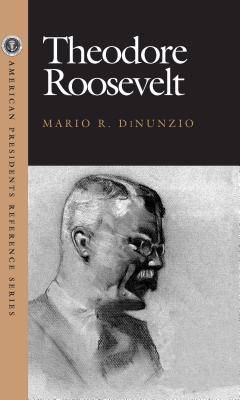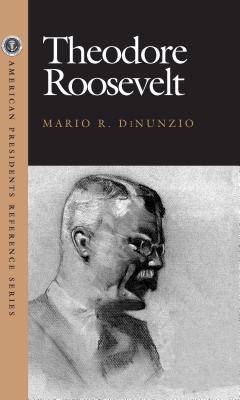
- Retrait gratuit dans votre magasin Club
- 7.000.000 titres dans notre catalogue
- Payer en toute sécurité
- Toujours un magasin près de chez vous
- Retrait gratuit dans votre magasin Club
- 7.000.0000 titres dans notre catalogue
- Payer en toute sécurité
- Toujours un magasin près de chez vous
67,95 €
+ 135 points
Description
Each volume in the new American Presidents Reference Series is organized around an individual presidency and gathers a host of biographical, analytical, and primary source historical material that will analyze the presidency and bring the president, his administration, and his times to life. The series focuses on key moments in U.S. political history as seen through the eyes of the most influential presidents to take the oath of office. Unique headnotes provide the context to data, tables and excerpted primary source documents. Theodore Roosevelt was born on October 27, 1858. He was elected to the New York state legislature in 1881. Following the death of his first wife, Alice Roosevelt, in February 1884, Roosevelt left politics to manage a cattle ranch in the Dakota Territory. In 1886 he returned to New York City, ran unsuccessfully for mayor, and married Edith Kermit Carow. Between 1889 and 1895 Roosevelt headed the U.S. Civil Service Commission. From 1895 to 1897 he served as president of the Police Commission in New York City. In 1897 President William McKinley appointed him assistant secretary of the navy. He resigned to serve in the military during the war against Spain. As lieutenant colonel he organized and led the Rough Riders, a regiment of cavalry, in Cuba. In 1889 Roosevelt narrowly won election as the New York State governor. The following year he accepted the Republican Party nomination as vice president on the McKinley reelection ticket. The ticket was victorious. On September 14, 1901, President McKinley died after being shot by anarchist Leon Czolgosz. At age forty-two Roosevelt became the youngest person to serve as president. Key policies and events during the Roosevelt administration were his antitrust efforts (culminating in the landmark 1904 Supreme Court decision Northern Securities Co. v. United States), ending the 1902 coal miners strike, acquiring the land to build the Panama Canal, introducing numerous pieces of reform legislation, and mediating the end to the Russo-Japanese War (an effort that won him the Nobel Peace Prize). In 1908 Roosevelt endorsed the election of his friend and secretary of war, William Howard Taft, to succeed him, but by 1910 he distanced himself from Taft. In 1912 Roosevelt unsuccessfully sought the Republican Party nomination to oust Taft. The Bull Moose Party, a third party of Republican progressives, was created and nominated Roosevelt. While campaigning, Roosevelt was barely sidetracked when he was shot in the chest. Splitting the Republican Party vote, Roosevelt finished in second place to Woodrow Wilson (Taft finished in third). On January 6, 1919, Theodore Roosevelt died. This new volume on the presidency of Theodore Roosevelt will cover his hard-charging personality, reformist, progressive domestic policies, environmental policies, role in the Republican and Bull Moose Parties, relationship with Congress, the Supreme Court, and the media, allegedly imperialistic foreign policies.
Spécifications
Parties prenantes
- Auteur(s) :
- Editeur:
Contenu
- Nombre de pages :
- 352
- Langue:
- Anglais
- Collection :
Caractéristiques
- EAN:
- 9781568027647
- Date de parution :
- 19-06-03
- Format:
- Livre relié
- Format numérique:
- Genaaid
- Dimensions :
- 162 mm x 234 mm
- Poids :
- 603 g

Les avis
Nous publions uniquement les avis qui respectent les conditions requises. Consultez nos conditions pour les avis.






